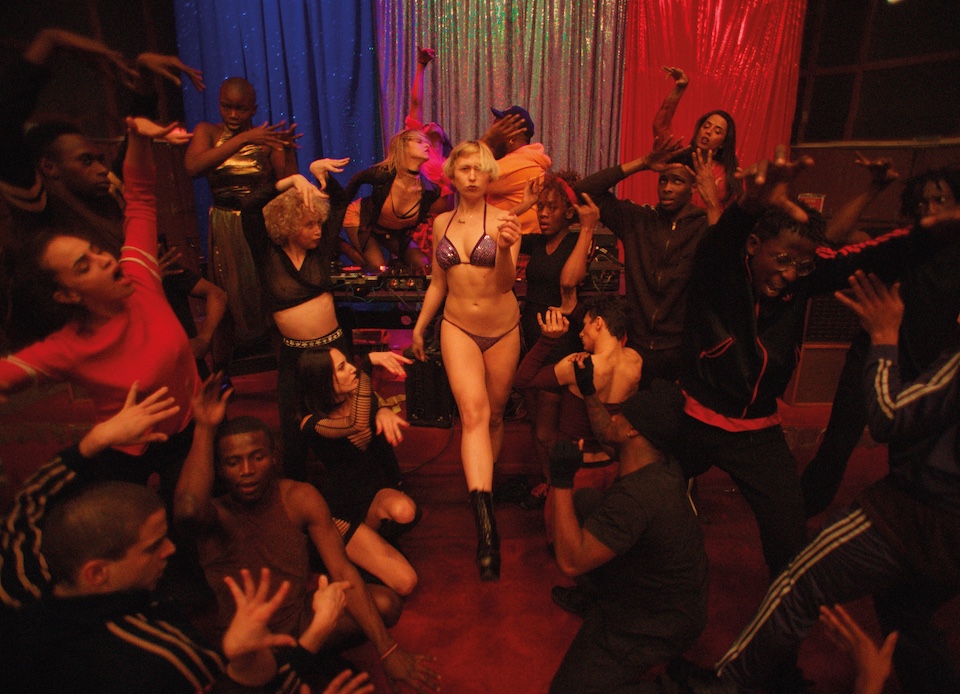
4/5 stars
Snow white is the colour that marks both the start and the end of this disturbing film that could be played on a continuous loop at a 90s warehouse rave. Between the soothing white screens, the movie fluctuates from shades of red, yellow gold, green and blue to a monochromatic crimson tint that becomes more oppressive as we approach the climactic sequence that gives the movie its name.
French-Argentine director Gaspar Noé (Irréversible and Carne) introduces us to members of a diverse dance troupé in a collage of interviews in which they share their fears, vices, loves and ambitions. We watch them talk on an old TV set surrounded by VHS boxes with ominous titles: Suspiria, Salo, Un Chien Andalou. And as they talk, we get an idea of their own personal egos and hints of secrets that will fuel the plot, although it’s hard to say that this movie has one.
It is actually better to view this movie as a long musical video clip, perfectly choreographed to let the camera jump from one character to another in a continuous tracking shot, interrupted only by sudden black screens and cynical intertitles like: “Life is a collective impossibility.”
Then the action starts and we can see the group’s high level of rapport and skill, enhanced by the movements of the free-camera that itself becomes part of the choreography. But this reveals itself to be an illusion as the camera starts to follow individual crew members and their anger, frustration, fear, envy and other dark feelings seep out in their conversations.
The characters talk without shame about abortions, drug abuse, promiscuity and similar experiences that might upset a prudish conservative. While the topics are clearly not taboo for the young generation depicted in the movie, under normal circumstances, the tensions generated by these behaviours should not escalate to crude violence. But, as the movie soon reveals, these are not normal circumstances.
Soon the dancers start to notice some psychotropic effects and arrive at the conclusion that someone must have spiked the bowl of sangria with acid. This leads to anger, confusion and a state of paranoia. Accusations fly and the one man who refused to drink because of his religious convictions is thrown out in the snow. The acid quickly unleashes all kinds of erratic behaviours, ranging from the exposure of dark secrets to cruel punishments and horrifying mistakes.
If Climax could be said to have a main protagonist, it would be the music. This plays a key role in establishing the mood of the film as it moves from the 80s synthpop of Soft Cell to the experimental aggressive techno of Aphex Twin and Gary Numan. The soundtrack also features music from Cerrone, Dopplereffekt, Suburban Knights and Daft Punk, which makes for an extraordinary experience especially for fans of the 90s electronic scene.
Related: Colombian cinema: Ten must-see films.
The unceasing music gets darker as the chaos grows, and the free-camera movement that smoothly followed the dancing sequence becomes a subjective vision of the hallucinatory effects of the drugs, allowing the viewer to feel the disorientation and angst of the characters as we see them fight, dance convulsively, have frenzied sex and enter a state of deep panic.
If there’s something questionable about Climax, it is the director’s premise that all of us humans are ruthless monsters deep down and all it takes to make us irrational and brutally violent is to override our impulse control mechanisms. Following this premise, without the musical and visual narrative components, Climax could easily pass as a conventional cautionary tale about the presumed dangers of drugs and dissolute lifestyles in the vein of movies like Reefer Madness (1936). It even has the mandatory announcement that the movie is based on real events and thus becomes an excuse to recreate hell in the form of a videoclip.
Climax is in theatres from today
Carlos H. Guzmán @artifexludi





